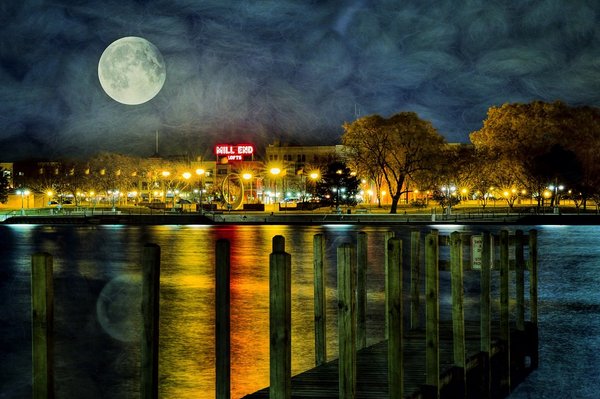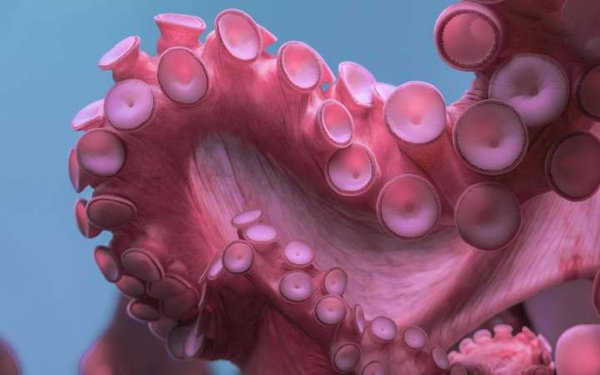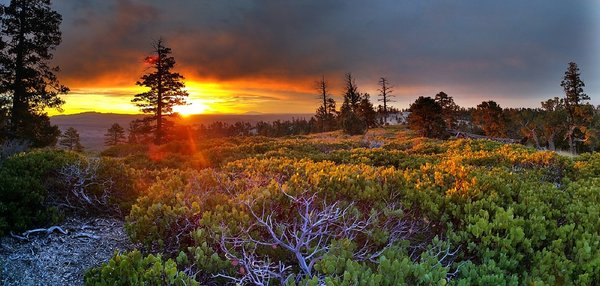Antarctic Glaciers Are Helping Drive Their Own Melt - IMPORTANT: To stop your posts to be hidden by the flag trollers, just post on https://busy.org/
IMPORTANT: To stop your posts to be hidden by the flag trollers, just post on https://busy.org/
Antarctic Glaciers Are Helping Drive Their Own Melt

Mertz Glacier. Credit: Colin Monteath Getty Images
Glaciers in Antarctica are melting from the bottom up as warm ocean water seeps underneath the ice.
It’s now the dominant driver of ice loss across most of the continent. But while researchers know it’s happening, they’re still trying to figure out what’s pushing that warm water to the ice sheet in the first place.
Now, a team of researchers from institutions in Tasmania, Australia, and Japan may have added one more piece to the puzzle.
A paper published Wednesday in Science Advances demonstrated that meltwater from Antarctic glaciers can change the ocean in ways that make it easier for warm water to reach the ice. That triggers even more melting—and the process continues in a kind of feedback loop.
That’s a big problem for the Antarctic ice sheet, whose growing contributions to global sea-level rise are a key subject of scientific concern. If melting begets more melting in a runaway cycle, the remaining question is how—or whether—it’s possible to make it stop.
Using observations and model simulations, the researchers—led by Alessandro Silvano of the University of Tasmania—have found that the feedback process is occurring in at least two locations, one in East Antarctica and one in West Antarctica. And if future climate change helps accelerate melting on the ice sheet, it could eventually happen in more places.
“This paper kind of says meltwater is winning,” said Anders Levermann, a climate scientist at the Potsdam Institute for Climate Impact Research.
The actual processes at play revolve around the mixing of ocean water near the Antarctic coast. The warm water melting the glaciers generally comes from naturally occurring warm ocean currents. The water originates in other parts of the world and eventually flows down toward the South Pole. This warm water is extremely dense and salty, and it has a tendency to sink beneath the cooler waters in the Southern Ocean, forming a warm layer near the bottom of the sea.
In many areas near the Antarctic coast, certain physical processes help to mix the warm and cold layers together. Much of this mixing has to do with the formation of sea ice in patches of open ocean near the coastline—as the water freezes, it expels its salt and causes the cold water just below the surface to become saltier and denser. It then sinks and mixes with the warm, salty water at deeper levels, cooling it down. When this happens, the warm water has less of a melting influence on nearby glaciers.
But the new research demonstrates that in some areas, where glaciers are producing unusually large quantities of meltwater, this mixing process isn’t happening. That’s because the influx of fresh water from the glaciers makes the surface waters less salty and less dense, keeping them trapped in a layer above the warm, salty water below—a process known as “stratification.” As a result, warm water is able to seep beneath the nearby glaciers, where it causes more melting and more fresh water to flow into the sea, continuing the cycle.
The mixing of warm and cold water in Antarctica “is a very strong process,” said Levermann, who was not involved with the new research. “That melting shelves, or even the melting ice sheet, can counter that—can be of the same order of magnitude and thereby constitute a feedback—that is really an interesting idea.”
The scientists focused on specific locations along the Sabrina Coast in East Antarctica and the Amundsen Sea in West Antarctica. In these spots, previous research had already demonstrated that the usual mixing was not occurring. The scientists wanted to know why.
In East Antarctica, observational data taken directly from the ocean suggested that glacial meltwater from the Moscow University Ice Shelf was freshening the nearby waters. Model simulations then confirmed that this freshening was preventing the waters from mixing and was allowing warm water to flow onto the continental shelf. The simulations suggest that this process is likely contributing to the high melt rates scientists have observed at nearby Totten Glacier, sometimes referred to as Antarctica’s “sleeping giant” because of the massive amount of ice it contains.
They uncovered a similar story in West Antarctica’s Amundsen Sea. Fresh water from rapidly melting ice shelves, including the vulnerable Thwaites Glacier, is freshening the nearby ocean and preventing the waters from mixing. As a result, warm water is flowing toward other nearby ice formations, including the Dotson and Getz ice shelves, and causing an increase in bottom-up melting there as well.
The researchers point out that plenty of other glaciers in Antarctica are producing meltwater as well—it just hasn’t reached a volume sufficient to overturn the mixing process in those locations. But that could change if melting speeds up in the future.
One of the biggest questions about the feedback loops described in this week’s paper is what kick-started the whole process. The research suggests that high melt rates have prevented the waters from mixing, which causes more melting and then more stratification. But what caused those initial high melt rates, which first caused the waters to stratify?
Scientists are still trying to figure that out, says lead study author Silvano.
“The main reason is that we have direct ocean measurements only for the past 25 years in the areas that are showing strong melting,” he said in an email. As a result, scientists must rely on models to find out what happened before that point.
It’s possible that natural climate variations had something to do with the initial melting, Silvano said. For instance, recent research has suggested that a strong El Niño event in the 1940s helped start high melt rates in glaciers bordering the Amundsen Sea. But many scientists increasingly believe that human activities are playing a role as well.
In the past, Antarctica’s infamous “ozone hole” is believed to have affected some Antarctic wind patterns, which may help drive warm water closer to the ice sheet, said Fernando Paolo, a geophysicist at NASA’s Jet Propulsion Laboratory. But while the ozone hole is now in recovery, climate change may be having a similar effect.
Some research suggests that rapid warming in the tropics, for instance, is altering major atmospheric circulation systems and affecting wind patterns around Antarctica. Changes in these wind patterns may be driving more warm water close to the ice edge, some researchers have suggested (Climatewire, April 10).
There’s still uncertainty associated with the direct links to climate change, Paolo noted. As scientists continue to improve their climate models, and particularly their ocean models, the exact processes will become more clear.
But Levermann, the Potsdam climate scientist, added that it’s “curious that this is occurring now, after 10,000 years of stability, while we are ramping up the temperature of the planet.”
“Trying to dismiss the idea that it has anything to do with global warming is also very difficult,” he said.
Reprinted from Climatewire with permission from E&E News. E&E provides daily coverage of essential energy and environmental news at www.eenews.net.
This article appeared first on https://www.scientificamerican.com/article/antarctic-glaciers-are-helping-drive-their-own-melt/
Reproduction rights CC BY 4.0 License (Attribution - Sharing under the same conditions)
I follow all the people who follows me! (If I have time, enough bandwidth and steem power...)

My 10 favorite post(s):
On Busy.org (It`s better!):
On steemit:

On Busy.org (It`s better!):
On steemit:

On Busy.org (It`s better!):
On steemit:

On Busy.org (It`s better!):
On steemit:


On Busy.org (It`s better!):
On steemit:


On Busy.org (It`s better!):
Vampire Hysteria Continues in East Africa
On steemit:
Vampire Hysteria Continues in East Africa


On Busy.org (It`s better!):
On steemit:


On Busy.org (It`s better!):
Extreme: these octopus moms brave all the dangers to hatch their eggs
On steemit:
Extreme: these octopus moms brave all the dangers to hatch their eggs


On Busy.org (It`s better!):
So beautiful sunshine on a lanscape!!!
On steemit:
So beautiful sunshine on a lanscape!!!

On Busy.org (It`s better!):
A sexy cute picture for my followers!!
On steemit:
A sexy cute picture for my followers!!


@cleverbot @banjo @catfacts @witzbot @clever


All the pictures posted here are free pictures found on free websites, public instagram accounts or from websites allowing the sharing of their posts
Reproduction rights CC BY 4.0 License (Attribution - Sharing under the same conditions)
How to defeat the trolls flaggers